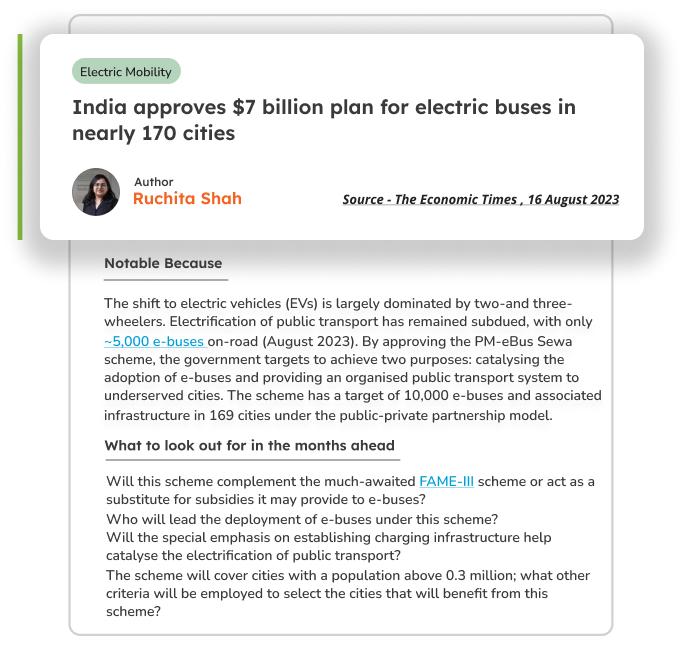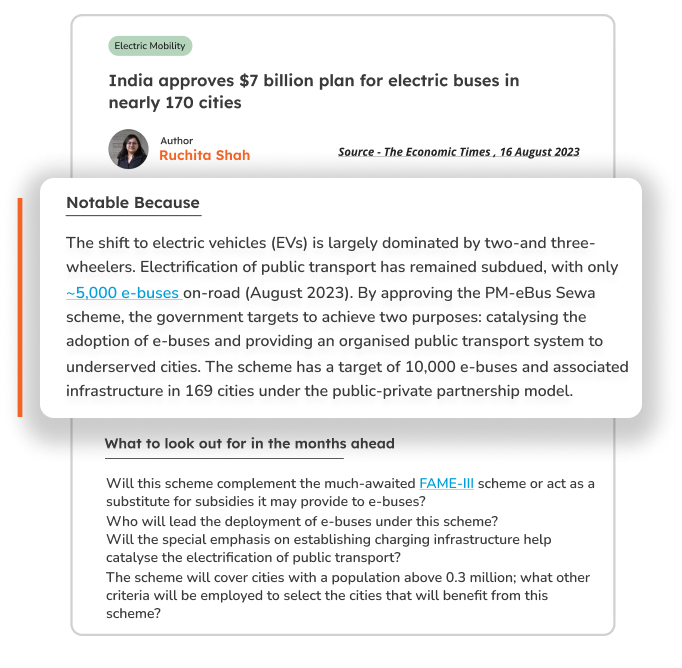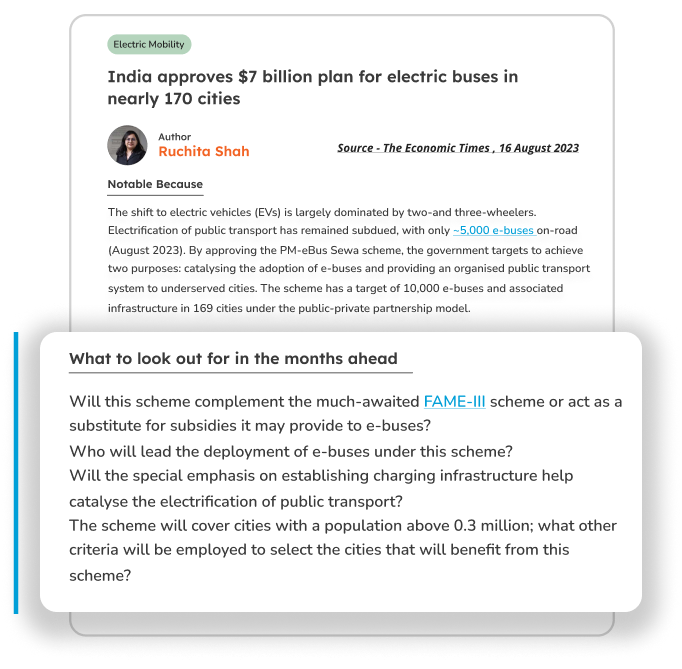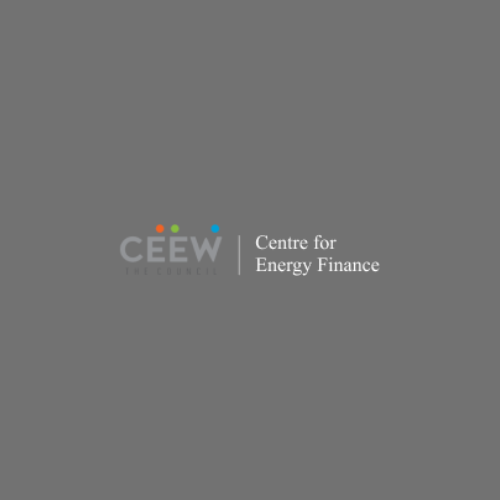

The shift to electric vehicles (EVs) is largely dominated by two-and three-wheelers. Electrification of public transport has remained subdued, with only ~5,000 e-buses on-road (August 2023). By approving the PM-eBus Sewa scheme, the government targets to achieve two purposes: catalysing the adoption of e-buses and providing an organised public transport system to underserved cities. The scheme has a target of 10,000 e-buses and associated infrastructure in 169 cities under the public-private partnership model.

















